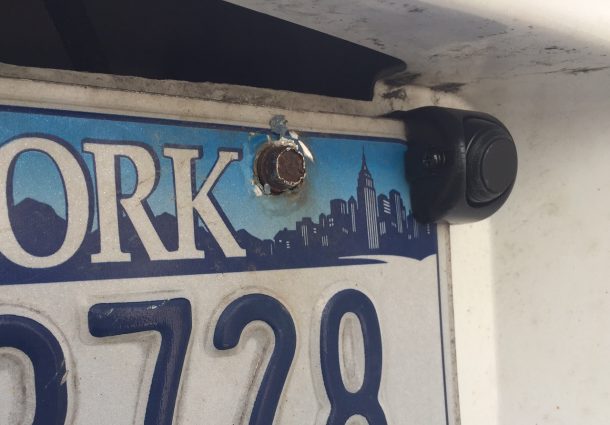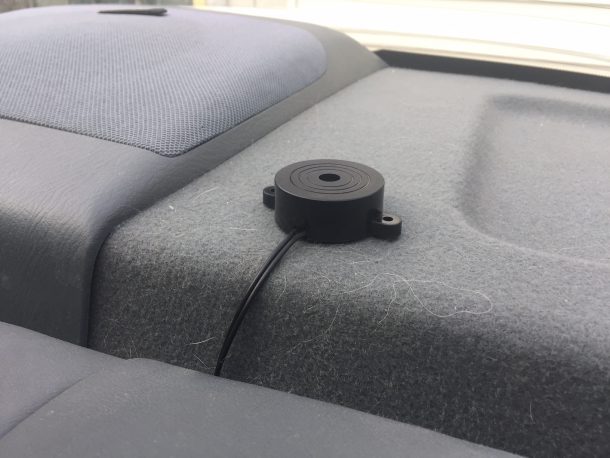If you’re looking for some electronic assistance backing your car but don’t want to mess with installing a rearview camera, a backup sensor system might be the solution.
Consisting of ultrasonic sensors mounted at the rear of the vehicle and connected to an audible alarm inside the car, a sensor system gives you a warning when you’re getting close to something behind you, typically growing more urgent as you get closer.
While not necessarily less expensive than a camera system, sensor systems avoid either having to install a screen in the cabin, or connect to one that’s already there. Sensor systems can also be easier to install. Both wired and wireless systems are available, with prices ranging from less than $20 to around $100. The Hopkins nVision Back-Up Sensor System is one such electronic aid — a well reviewed, wired system that retails for $49.95. As we’ve said before about all things electronic, expect to find it for less online.
Installation was pretty simple, aided by detailed, illustrated instructions. No drilling is required, which we really liked after looking at some systems that require boring several large holes in the rear bumper for sensors. Instead, the nVision system uses two sensors mounted on either side of a replacement license plate bracket, which itself bolts in place of whatever you have. From there, it’s a simple matter of running one wire to the back up light wiring for power, another to the cabin for the alarm, and a third for ground. The sensors are height adjustable, and the instructions include suggested positioning based on the height and angle of your vehicle’s license plate.
The nVision gets bonus points for thoughtful touches like longer bolts to accommodate the added thickness of the license plate sensor bracket, fold-over wire splicing connectors to make wiring easier, and a rubber grommet to avoid damaging the wire where it passes into the car. All the components have a quality look and feel, including the wire and connectors. And the nVision is covered by a limited, three-year warranty.
The only gripe we had was with the length of the wire for the alarm module. It was barely long enough to reach the rear parcel shelf of our Acura, and would be far too short to reach the front. While not a huge deal, it might be nice to have enough length to allow more installation options. The instructions call for installing it back there for sedans, and in the rear cargo area in minivans and SUVs. The instructions also warn against cutting or splicing the wire to lengthen it, and warn that doing so will void the warranty.
Regardless of location, hearing the warning is not a problem. There are two volume settings to choose from, and we had no problem hearing the warning using the quieter of the two settings. On the louder setting, you could probably still hear it if you accidentally installed it in your neighbor’s car. And you might want to warn rear seat passengers seated in front of it, lest one of them suffer an unexpected cardiac arrest.
The nVision works well overall, with an intermittent warning that begins as a slow beep when you’re backing toward an obstacle about 5-feet away. As you get closer, the beep becomes more rapid, finally sounding a continuous note when you’re about a foot from impact. The warning stops as soon as you shift out of reverse.
While not as helpful as a camera, sensor systems like the nVision do provide some backing assistance, and can be less of a hassle to install depending on which type you choose. It’s always helpful to read user reviews on any product you’re considering.
What would you do with a $500 eBay Gift Card? We’re giving away three of them. Here’s how to enter to win.










